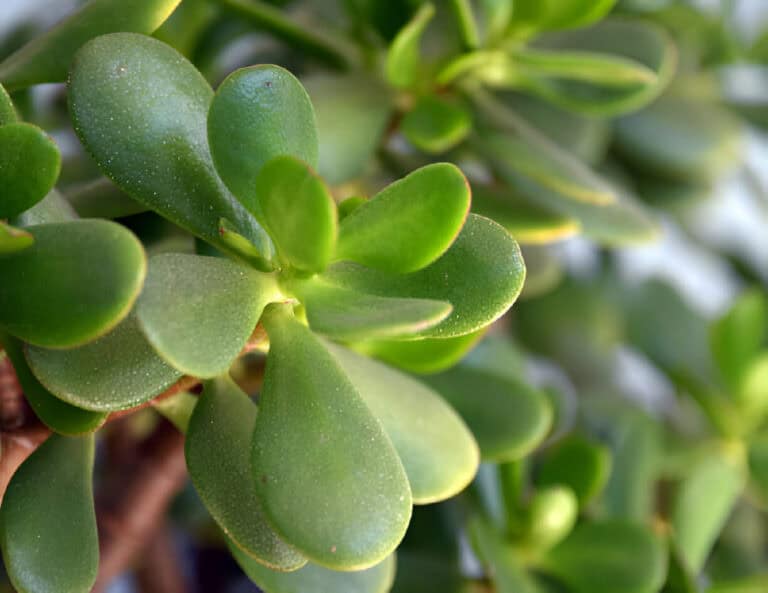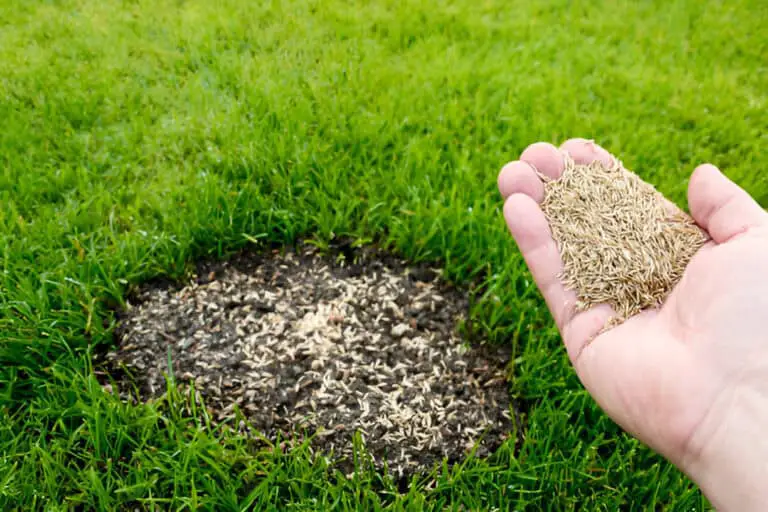How Many Broccoli Plants Per Square Foot? Maximizing Your Yield
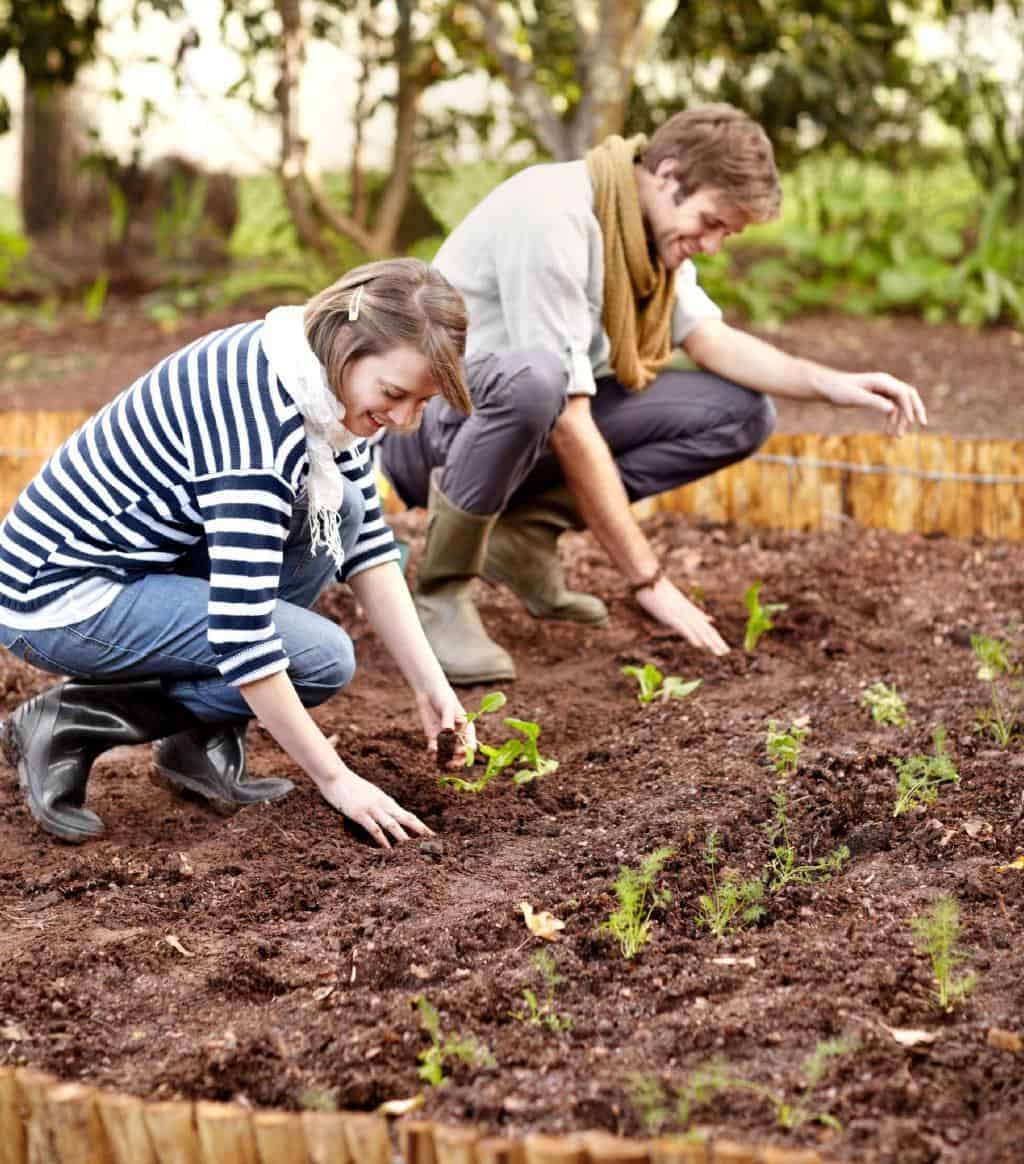
Are you a broccoli enthusiast with limited gardening space? Do you dream of growing a lush broccoli garden that yields an abundant harvest? In this article, we’ll share tips to boost your broccoli yield. You’ll learn how many plants fit best in each square foot.
To help you grow a thriving broccoli garden, we’ll look at what affects plant density. We’ll also explore how to space your plants correctly. From row spacing to plant spacing, we’ll guide you through the intricacies of achieving the ideal broccoli garden layout.
Get ready to unlock the secrets to a thriving broccoli garden and witness your yields reach new heights. Let’s dive in and discover how many broccoli plants per square foot will lead you to gardening success!
Understanding the Space Requirements of Broccoli Plants
A nutrient-rich vegetable that many people adore, broccoli, can be a rewarding addition to your garden. To boost the growth and yield of your broccoli plants, you need to find the best spacing between them.
The following factors should be considered when planning the layout of your broccoli garden:
- Plant size: Broccoli plants require adequate space for their growth and to prevent overcrowding, which can lead to decreased yield and increased susceptibility to pests and diseases.
- Head size: Broccoli varieties have different head sizes. This matters when figuring out spacing needs.
- Air circulation: Sufficient air circulation is essential to prevent the buildup of moisture and reduce the risk of fungal diseases.
To find out how many plants fit in a square foot, divide the space by the spacing needed for your broccoli variety. Keep in mind that efficient spacing techniques, such as intercropping or staggered planting, can further maximize your yield.ded spacing for your chosen broccoli variety. Keep in mind that efficient spacing techniques, such as intercropping or staggered planting, can further maximize your yield.
Optimal Spacing for Broccoli Plants
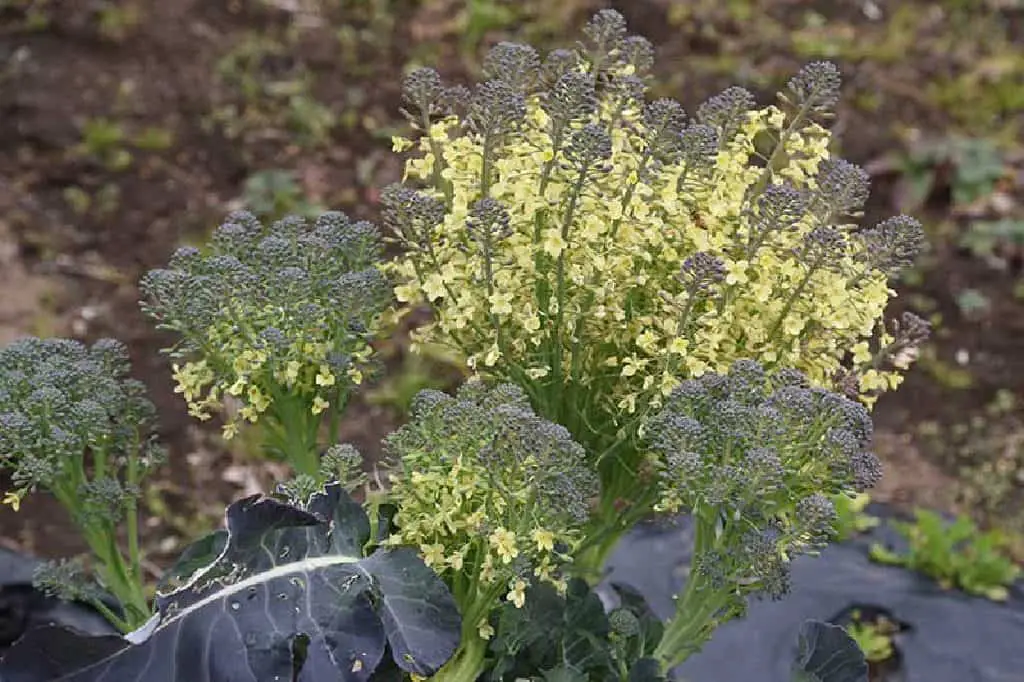
To ensure healthy growth and maximize your yield, it is crucial to give broccoli plants enough space to develop properly. Crowding can stunt growth. It also reduces airflow and increases the risk of pests and diseases. This can lead to lower yields.
The following guidelines will help you determine the ideal spacing for your broccoli plants:
- Row Spacing: Broccoli plants are typically grown in rows. For efficient spacing, leave approximately 18 to 24 inches of space between each row. This gives plants plenty of space to grow. It also makes maintenance tasks like weeding and harvesting easier.
- Plant Spacing: Within each row, it is recommended to space broccoli plants 12 to 18 inches apart. This broccoli plant spacing ensures adequate airflow between the plants, reducing the risk of diseases that thrive in moist, crowded conditions. It also allows each plant to receive ample sunlight for optimal growth and head development.
- Square Foot Gardening: If you practice square foot gardening, which is a popular method for maximizing yield in small spaces, you can grow a single broccoli plant per square foot. In this approach, the plants are spaced 12 inches apart in all directions, allowing each plant to utilize the entire square foot for growth.
Adhering to these spacing guidelines will help you create a healthy and productive broccoli garden. However, keep in mind that the specific recommendations may vary slightly depending on the variety you choose to grow.
How Many Broccoli Plants Per Square Foot?
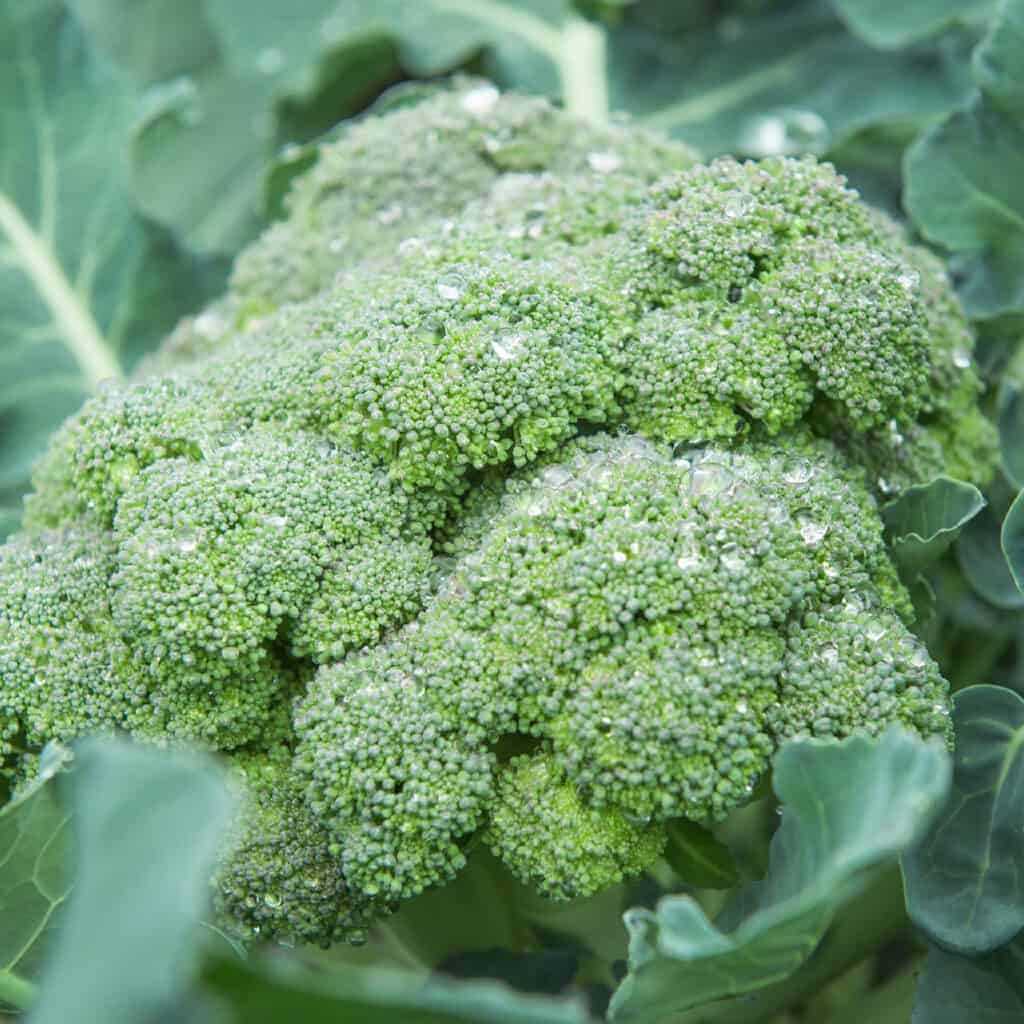
On average, it is recommended to plant broccoli at a spacing of 18 to 24 inches apart in rows, with rows spaced 30 to 36 inches apart. This spacing gives each plant enough room to grow strong roots. It also helps air flow between the plants, which lowers disease risk. Based on this spacing, you can calculate the number of plants per square foot.
If we assume a spacing of 18 inches between plants within a row and 30 inches between rows, each broccoli plant would occupy approximately 1.25 square feet of space. The area that the plant itself occupies as well as the distance between rows are both taken into account in this calculation. Therefore, in a square foot area, you could typically accommodate around 0.8 to 1 broccoli plant.
Some gardeners like to grow broccoli more intensively. This is especially true in raised beds or containers where space is tight. In such cases, you may opt for closer spacing between plants, such as 12 inches apart in rows, which would allow for approximately 1.8 to 2 plants per square foot. This approach requires careful monitoring of nutrient levels and moisture levels to ensure each plant receives adequate resources for optimal growth.
Keep in mind that overcrowding the plants can lead to competition for resources, stunted growth, and an increased risk of pests and diseases. Giving each broccoli plant enough space helps it grow strong roots. It can reach nutrients and water better and get enough sunlight for photosynthesis.
Read: How Many Broccoli Seeds Per Hole? Perfect Planting Guide
Selecting the Right Broccoli Varieties for High Yield
Broccoli comes in various varieties, each with its own growth habits and characteristics. When aiming for a high yield in a limited space, it’s essential to choose varieties that are suitable for high-density planting. Consider the following factors when selecting broccoli varieties:
- Compact growth: Look for varieties that have a more compact growth habit, as they can be planted closer together without compromising their development.
- Days to maturity: Consider the length of your growing season and choose varieties that can reach maturity within that time frame.
- Climate adaptability: Ensure that the selected varieties are suitable for your specific climate and growing conditions to maximize their yield potential.
By selecting the right broccoli varieties for high yield, you lay the foundation for a productive garden.he right broccoli varieties for high yield, you lay the foundation for a productive garden.
Factors Influencing Broccoli Yield per Square Foot
Several factors can influence the yield of broccoli plants in a given area. Understanding these factors and implementing appropriate management techniques can significantly impact your overall harvest. Consider the following:
- Sunlight: Broccoli plants thrive in full sun, so ensure they receive at least 6 hours of direct sunlight per day for optimal growth and productivity.
- Temperature and moisture: Broccoli prefers cooler temperatures and consistent moisture levels. Adequate irrigation and mulching can help maintain soil moisture and regulate temperatures.
- Soil requirements and nutrient management: Prepare the soil by incorporating organic matter and balanced fertilizers. Testing soil regularly helps find nutrient gaps. This ensures plants get the right nutrition for healthy growth.
- Pest and disease management: Implement preventive measures and integrated pest management strategies to protect your broccoli plants from common pests and diseases. Regular inspection and early intervention are key to maintaining high yields.
- Pruning and support: Prune your broccoli plants by removing side shoots to encourage the growth of larger main heads. Providing support, such as stakes or cages, can prevent flopping and improve air circulation.
By focusing on these factors, you can improve your broccoli plants’ environment and boost your yield.an create an optimal environment for your broccoli plants and maximize your yield potential.
Intensive Planting Techniques for Maximizing Broccoli Yield
Intensive planting techniques offer a practical approach to maximizing the yield of your broccoli plants in a limited space. Consider the following techniques:
- Companion planting: Grow compatible plants alongside broccoli to optimize space utilization and encourage mutual benefits, such as pest control or nutrient sharing. Suitable companion plants for broccoli include Brussels sprouts, lettuce, spinach, and radishes.
- Succession planting: Instead of planting all your broccoli at once, stagger your plantings at regular intervals. This ensures a continuous harvest throughout the growing season, maximizing your overall yield.
- Vertical gardening: Utilize trellises, cages, or stakes to support your broccoli plants vertically. This technique saves space, promotes better air circulation, and allows for more plants per square foot.
Using these planting techniques lets you maximize space and boost your broccoli garden’s productivity.ost of your available space and increase the productivity of your broccoli garden.
Understanding the Importance of Soil Preparation
Preparing the soil is a crucial step in ensuring the success and maximum yield of your broccoli plants. Consider the following guidelines:
- Soil testing: Conduct a soil test to assess its nutrient content and pH levels. This information will guide you in making appropriate amendments to optimize soil fertility.
- Amendments: Use organic matter like compost, aged leaf mulch, or well-rotted manure. This will improve soil structure and help retain nutrients.
- Fertilization: Apply a balanced fertilizer or organic amendments rich in nitrogen, phosphorus, and potassium to provide essential nutrients for robust plant growth and higher yields.
- Maintaining soil health: Implement practices like crop rotation and cover cropping to reduce the risk of soil-borne diseases and replenish nutrients naturally.
By preparing your soil adequately, you create a fertile and nutrient-rich environment that supports healthy broccoli growth and maximizes your yield potential.h environment that supports healthy broccoli growth and maximizes your yield potential.
Read: Where Is The Best Place To Plant Broccoli? Growing Broccoli Like a Pro
Effective Watering and Irrigation Practices
Water is a vital component for the healthy growth of broccoli plants. Here are some practices to optimize watering and irrigation:
- Watering schedule for broccoli: Keep the soil moist. Water deeply if the top inch feels dry. Aim for about 1–1.5 inches of water per week, depending on weather conditions.
- Choosing the right irrigation methods is important. Think about your garden setup. Pick methods that fit your needs. Options include drip irrigation, soaker hoses, or watering by hand.
- Water management techniques: Apply mulch around the base of broccoli plants to help retain moisture, regulate soil temperature, and prevent weed growth. There are some disadvantages of mulching, reducing water evaporation is one of them.
- Strategies for efficient water usage: Collect and utilize rainwater whenever possible. Additionally, group plants with similar water requirements together for more efficient watering.
Keeping soil moisture just right is key. It helps avoid water stress and supports healthy broccoli plants that produce well.
Maintaining Optimal Plant Health
To maximize your broccoli yield, it’s essential to maintain the overall health and vigor of the plants. Here are some important considerations:
- Identifying common pests and diseases: Familiarize yourself with common pests such as aphids, cabbage worms, and flea beetles, as well as diseases like clubroot and powdery mildew. Regular inspection helps catch problems early.
- Organic pest control methods: Use organic strategies like adding beneficial insects, such as ladybugs. You can also try natural insecticidal soaps and neem oil sprays.
- Early detection and treatment of diseases: Monitor your plants for any signs of disease, such as yellowing leaves or unusual spots. Promptly address any issues with appropriate treatments or removal of infected plants.
- Promoting plant vigor: Ensure your broccoli plants receive sufficient sunlight, nutrients, and space to grow. Practice proper spacing to allow for good air circulation, which reduces the risk of diseases.
Keeping your plants healthy helps them grow strong and boosts your broccoli yield.
Harvesting and Storing Broccoli
Knowing the right time to harvest your broccoli is crucial for both quality and yield. Here’s what you need to consider:
- Signs of readiness for harvest: Look for firm and compact heads with tightly closed buds. Avoid waiting too long, as overripe broccoli may become tough and bitter. You don’t want to waste time removing broccoli plants after harvesting.
- Harvesting techniques: Use a sharp knife or garden shears to cut the main head of the broccoli about 5 to 6 inches below the head. Leave the plant in place, as smaller side shoots may develop.
- Proper handling and storage: After harvesting, immediately refrigerate broccoli to preserve its freshness. Place the heads in a plastic bag, removing as much air as possible, and store them in the vegetable crisper.
- Using extra broccoli: If you have more than you can eat right away, blanch it and freeze it for later use. This allows you to enjoy your harvest throughout the year.
By harvesting at the right time and properly storing your broccoli, you can savor its flavors and nutrients for an extended period of time.oring your broccoli, you can savor its flavors and nutrients for an extended period of time.
Troubleshooting Common Yield Issues
Occasionally, broccoli plants may face certain issues that can affect their yield. Here are some common problems and possible remedies:
- Stunted growth: If your broccoli plants are not growing as expected, check for nutrient deficiencies or imbalances in the soil. Conduct a soil test to identify any deficiencies and amend accordingly. Ensure that the plants receive adequate sunlight and water.
- Bolting: Bolting is when broccoli plants prematurely produce flowers and go to seed. To prevent bolting, choose broccoli varieties that are less prone to bolting and plant them at the appropriate time. Adequate spacing, consistent moisture, and cooler temperatures can also help mitigate bolting.
- Poor yield: If your broccoli plants are producing small or sparse heads, nutrient deficiencies may be the culprit. Regularly fertilize the soil with a balanced fertilizer, paying attention to nitrogen, phosphorus, and potassium levels. Proper watering and pest control are also essential for optimizing yield.
- Pests and diseases: Common pests like aphids and cabbage worms can damage broccoli plants and reduce yield. Implement organic pest control methods, such as handpicking insects or using insecticidal soaps. For diseases, use good sanitation. Also, practice crop rotation. If needed, act quickly with organic fungicides.
Fixing these issues quickly can boost the yield and health of your broccoli plants.opriate remedies, you can improve the overall yield and health of your broccoli plants.
Tips for Long-Term Yield Improvement
If you’re looking to continuously improve your broccoli yield over the long term, consider these tips:
- Crop rotation: Rotate your broccoli plants with other crops each season to prevent the buildup of pests and diseases in the soil. This practice helps maintain soil health and minimizes the risk of recurrent issues.
- Record-keeping and analysis: Keep a record of your broccoli planting, including varieties, planting dates, and yields. Analyze this data over time to identify trends and make informed decisions for future planting and cultivation.
- Continuous learning: Stay updated on the latest research, techniques, and best practices for growing broccoli. Attend gardening workshops, read reputable gardening publications, and engage with fellow gardeners to expand your knowledge.
- Advanced techniques and technologies: Explore advanced techniques such as hydroponics or vertical farming for space-efficient and controlled environment cultivation. Also, think about using smart irrigation systems or soil moisture sensors. They can help you use water better and boost your yield.
Using these tips for growing broccoli will improve your yield. Enjoy the benefits of a flourishing garden!
Conclusion
To get the most broccoli from each square foot, pay close attention to:
- Watering
- Plant health
- Harvesting techniques
- Troubleshooting
- Long-term improvement strategies
Each factor plays a key role in your success.
To grow tasty and healthy broccoli, follow these steps:
- Water and irrigate effectively.
- Keep plants healthy.
- Use proper methods for harvesting and storing.
- Fix common yield problems.
- Adopt tips for long-term success.
By doing all this, you can enjoy a bountiful broccoli harvest from your garden.
Happy growing up!
FAQs
How many broccoli plants can I grow in a 4×4 raised bed?
In a 4×4 raised bed, you can typically grow around 4 to 8 broccoli plants, depending on the spacing recommendations. Aim for a spacing of 12 to 18 inches between each plant to allow sufficient room for growth and airflow.
How close can I plant broccoli plants together?
Broccoli plants should be planted approximately 12 to 18 inches apart to provide ample space for proper development. This spacing lets each plant get enough sunlight and airflow. This helps lower the risk of diseases that thrive in crowded places.
Can I grow broccoli in containers with limited space?
Yes, you can definitely grow broccoli in containers with limited space. Choose a container that is at least 12 inches deep and wide enough to accommodate a single broccoli plant. Ensure the container has good drainage and use a quality potting mix. Sunlight, watering, and fertilizer are key for growing broccoli in containers.
How long does it take for broccoli plants to reach maturity?
Broccoli plants typically take around 70 to 100 days to reach maturity, depending on the variety and growing conditions. Remember, maturity can vary. So, check your plants for signs like tight, compact heads and a bright green color before you harvest.
Can I grow broccoli year-round, or is it a seasonal crop?
Broccoli is a seasonal crop that thrives in cool weather. It is commonly grown as a spring or fall crop in most regions. While broccoli can tolerate light frosts, extreme heat can cause the plants to bolt and affect their productivity. It’s best to consult your local climate and follow planting schedules suitable for your area.
Can I save seeds from my broccoli plants for future planting?
Yes, you can save seeds from your broccoli plants for future planting. Allow the plants to fully mature and produce flower heads. Once the flowers fade and seed pods form, harvest the pods and allow them to dry completely. Open the dried pods to collect the seeds. Store them in a cool, dry place for future use.
Are there any specialized techniques or equipment available for maximizing broccoli yield per square foot?
There are various techniques and equipment available to maximize broccoli yield per square foot.
Some popular methods are:
Companion planting with crops that work well together.
Using trellises or vertical supports to grow broccoli up.
Employing square
Also, amending the soil regularly, spacing plants right, and providing enough water and nutrients can lead to better yields. Timely pest and disease management helps too. Researching and experimenting with these techniques can greatly enhance your broccoli harvest.



